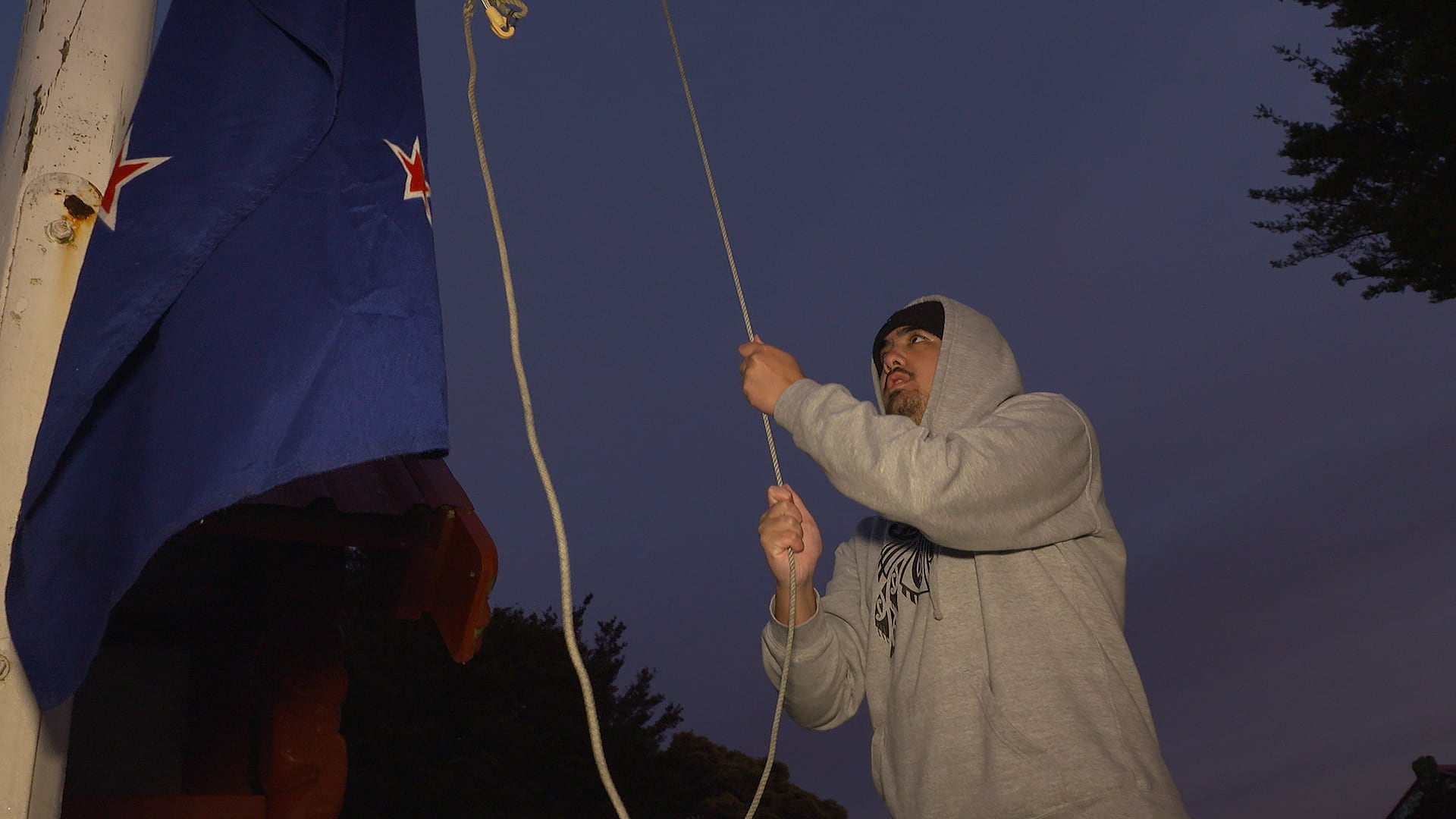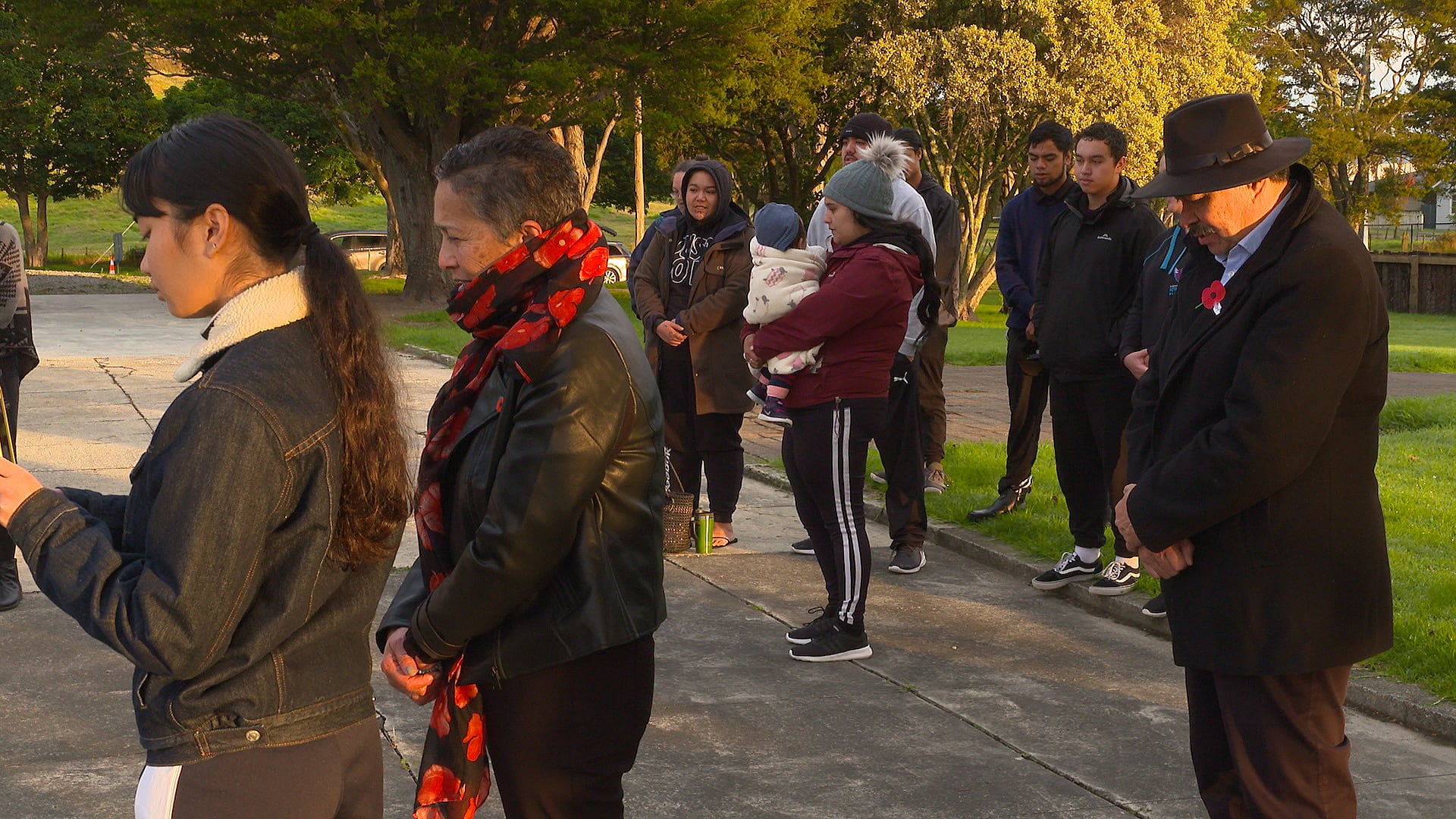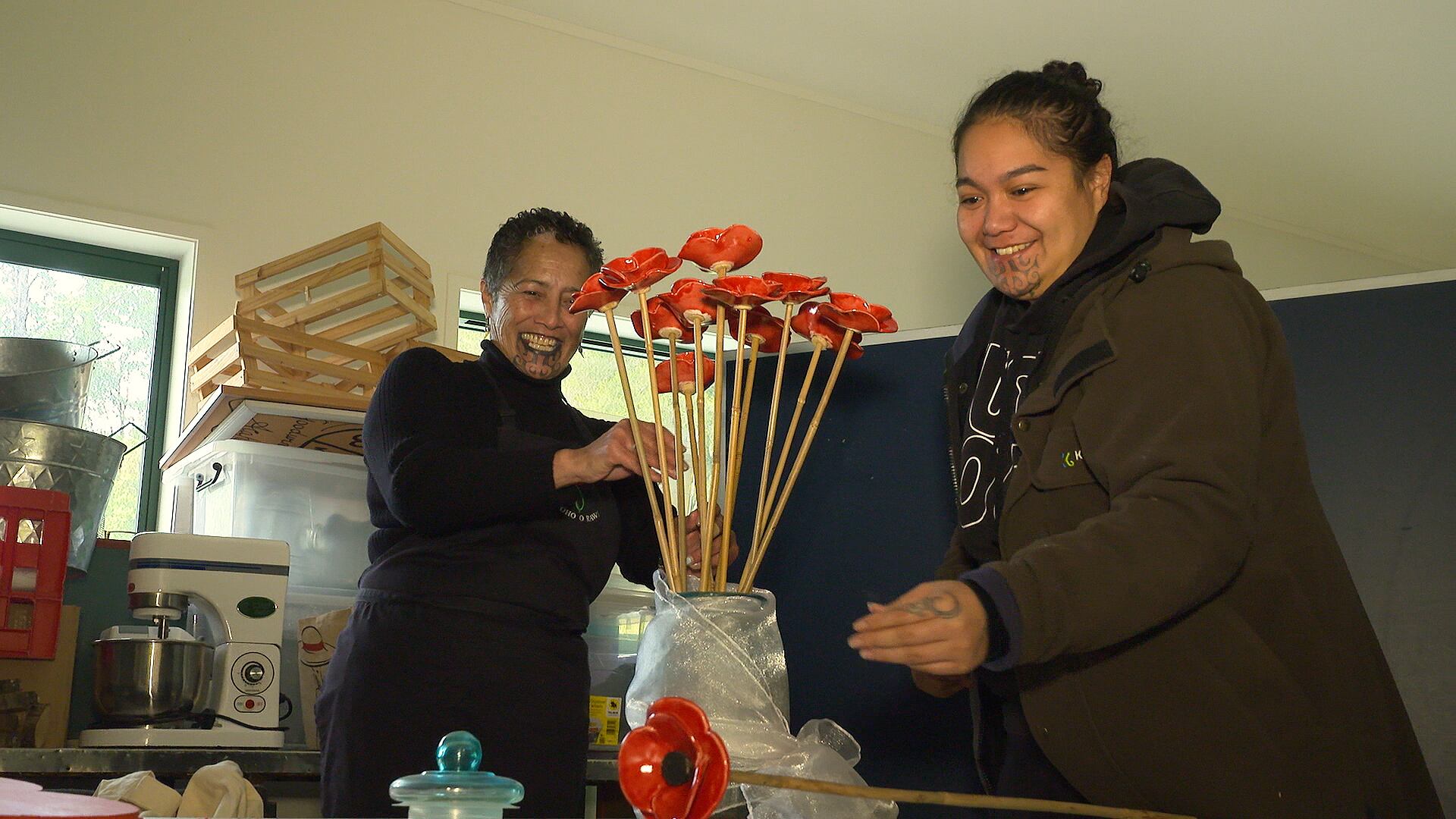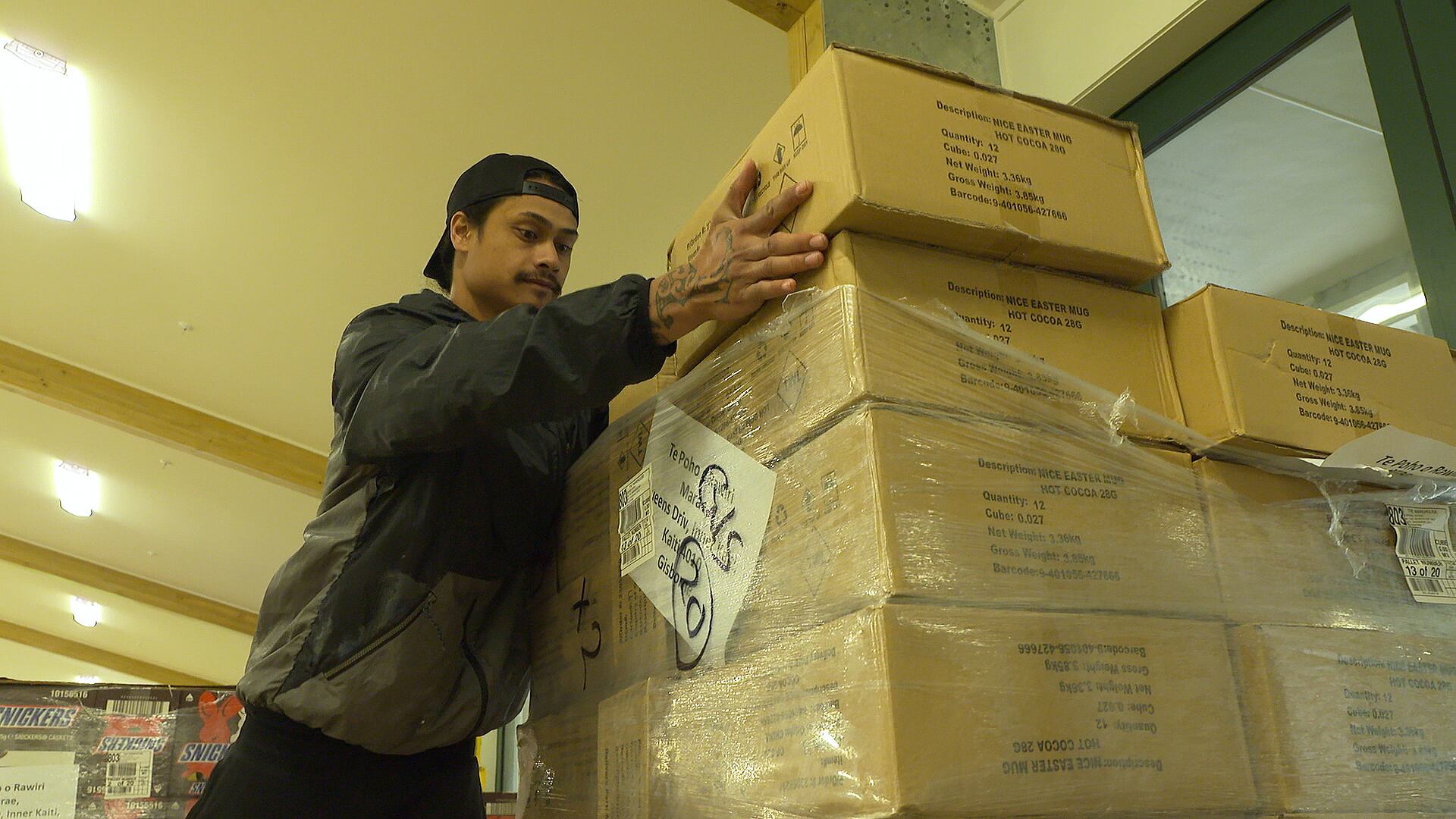A prominent Tūranganui a Kiwa marae, designed to commemorate its various war campaigns, is preparing to deliver 16,000 kai parcels to 58 marae across the region.
The massive undertaking and essential service by Te Poho o Rawiri Pā draws on the experience it has gained feeding the multitudes of Māori and Pākehā during their annual commemorations on ANZAC Day.
However, today also marks a historic event for the Ngāti Oneone hapū who are based in Kaiti. They hold one of the largest clusters of Tairāwhiti events during ANZAC but now it comes with raw emotion as the Covid-19 lockdown prevents the community from attending.

New Zealand Flag flies high at Te Poho o Rawiri Pā. Photo / File
Marae Chair, Harata Gibson, explained to Te Ao Māori News that the experience is a first for the pā in 74 years since WWII.
“When we first decided to put the rāhui on the pā, the biggest heart sink was not having ANZAC.”

Marae essential workers pay their respects at the morning service. Photo / File
Ultimately, the pā is recognised on the East Coast of the North Island for its commemorations and celebrations for Māori and Pākehā who contributed to various war campaigns since the Anglo Boer War in 1899-1902.
With the onset of WWII, Māori initially sent up to 900 ‘kaupoi’ from C Company in response to the call by Sir Apirana Ngata, who saw the creation of the Māori Battalion as an important way of attaining equality in the future.
However, by the time of their return back to Aotearoa, more than 200 lives had been lost among the warriors of Tairāwhiti. Their welcome home ceremony took place at Te Poho o Rawiri in 1946.

Harata Gibson and her daughter Tahea preparing for their small bubble commemorations. Photo / File
For Gibson, the legacy of being a ringa raupā on their beloved pā comes at the cost of not having had the chance to meet one of her three uncles, Umuariki Ramleigh Te Kani, who served overseas and died of his wounds in Italy (1944). Their father, Heta Barney Te Kani, who embarked on the 12th reinforcement, laid on his son’s grave knowing he could not bring his body back home.
Their youngest brother, Tokorua Te Kani, was too young to serve, however, his purpose was part of a wider community response once he met his wife Rawinia Te Kani, of Te Whakatōhea and Te Whānau ā Apanui.
Both of them were an integral part of Te Poho o Rawiri Pā helping to host ANZAC commemorations for Tairāwhiti iwi for more than six decades.

Food parcels ready to be delivered to marae across Tairāwhiti. Photo / File
Now, their tamāhine, Harata, and her husband, Arapeta, have taken on the mantle and urge their hapū and mokopuna to continue the responsibility to host and manaaki their communities in Tūranganui a Kiwa on ANZAC.
“Our people lost their reo Māori because a lot of that generation didn’t come back home.”
After the completion of their wharekai, which cost $3.4 million to build, and the opening of their kōhanga reo, plans are already underway to build a kura kaupapa Māori. The idea behind these projects is part and parcel of the aspirations of those who fought for their freedom.
